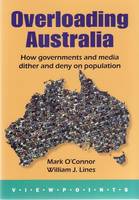The Biosphere and the Lithosphere
Humans live in and from the biosphere. But in the first decade of the
21st Century, 85 percent of the primary energy consumed by the 6.7
billion humans comes from the lithosphere.
About 40 percent of this energy is oil. Another 40 percent comes from
natural gas and coal, and 6 percent more is from uranium.
This represents close to 10 billion tons of oil equivalent, extracted
every year from below ground.
The Technosphere
The technosphere, that recent human creation, transforms the
biosphere, with the extraction, transformation, and transport of
useful materials from the Earth crust at a rate of about 33 billion
tons per year. In addition, about 36 billion tons of the accompanying
ores and some 30 billion tons of earth crust cover are extracted. In
total, the 11 billion tons of equivalent oil of primary energy are
needed every year to extract, transform and transport about 100
billion tons of materials, including the energy materials themselves.
Without that energy, these movements will not be possible. With
decreasing energy supplies, the extraction of materials and the
related services will decrease accordingly.
Nature of this sphere
Being a sphere, the Planet is limited in size. It is obvious,but in
this world needs to be continuously emphasized, that the resources
contained in it are also limited. Geologists in general and the ASPO
community in particular, know very well that the extraction of
resources from the lithosphere is subject to a given pattern that
limits and shapes the extraction rates. It has, more or less, the
form of a bell shaped curve, shown in its logo. It is the Hubbert
curve. Even admitting that the shape of the curve may drift apart in
some cases, from the theoretical one, due to social causes, the
principle is out of question.
Resource peaks and energy flows
And some of us feel that we are reaching the oil peak in our ascent,
and other neighbouring peaks as well, even the present financial
storms and other geopolitical clouds may disguise that cordillera, as
exclusively a monetary problem.
Then, it is a question of flows, diminishing flows, rather than the
end of oil or gas. It is a physical and geological issue, rather than
an economic one. Pouring more paper money into the markets will not
help to realize where we are. Those present frentic movements very
much resemble the classic film scenes of thieves throwing and
dispersing the bank notes of the loot in the middle of a crowd, to
create a momentary convulsion and thus, trying to escape from the
police, while keeping a couple of rolls in the pockets.
Limits of human economics
As M. King Hubbert said: `There's no monetary mechanism in existence
that can find oil that God didn't put there and the price isn't going
to increase that amount of oil'. The same can be applied for all
other materials that humans demand today in increasing amounts.
And there is a clear evidence that global economic growth and global
energy consumption run parallel and are very directly related,
despite some anomalies in specific countries, which claim
improvements in efficiency, in the GPD/Unit of product or service
ratio, while diverting and outsourcing the burden to third countries
o regions. Technology improvements and higher financial investments
help to delay the peak or plateau of the bell curve or reshape it,
but can neither fight the reality of gradual depletion.
There are also clear indicators that greenhouse and other gas
emissions are also directly related to the fossil fuels, extracted
from the lithosphere and burnt to provide goods and ser-vices to
society.
However, classical economists still work, think and behave as if they
lived on a flat Earth with limitless resources to be made available
by Man's ingenuity and market forces.
Very serious issues are at stake caused by the growing gap between
the available fuel supply, which is subject to natural depletion and
the ever growing demand implied by classical economic theory.
Future survival
In the same way as a seed takes time to emerge from the ground and
form a plant, we will soon have to face the paradox and the dilemma
of returning to the biosphere and its resources for survival, and
rely more and more on renewable energy resources above ground.
The Sun projects onto the Earth some 8,500 times more primary energy
than we consume, but it is, again, rather than a question of volumes,
a matter of flows and feasible energy capture rates of this as
beautiful as dispersed energy.
We urgently need to determine the extent to which we can maintain the
present socio-political and technological environment with more of
the renewable energy resources from the biosphere and less from the
lithosphere, by using the human ingenuity and technology; or by
reshaping our way of living; or perhaps and better, a wise
combination of both.
Seventh ASPO International conference in Barcelona, 20-21 October 2008
We will be analyzing and discussing all these important questions in
detail in the 7th. ASPO (Association for the Study of Peak Oil and Gas) International Conference at the World Trade Center in Barcelona, Spain, on October 20th and 21st.
See the Official program (pdf file) "From Below Ground to Above Ground"
Join us by registering here
For questions and contacts, please address to
spain[at]telefonica.net>
For more information http://www.aspo-spain.org/aspo7
Welcome to Barcelona.
Article by Pedro from Madrid, subtitled by Sheila Newman for candobetter.org


 28 September at 6pm via zoom. A Q&A will follow the three speakers, who are: Richard Tanter, Kathryn Kelly, and Alison Broinowsky. See details about speakers and venue etc below.
28 September at 6pm via zoom. A Q&A will follow the three speakers, who are: Richard Tanter, Kathryn Kelly, and Alison Broinowsky. See details about speakers and venue etc below. Canberra Conversations SUNDAY 19 March 2023 AT 3:30 PM – 5:30 PM Smith's Alternative, 76 Alinga Street, Canberra, ACT, Australia, Australian Capital Territory. 3 speakers plus forum.
Canberra Conversations SUNDAY 19 March 2023 AT 3:30 PM – 5:30 PM Smith's Alternative, 76 Alinga Street, Canberra, ACT, Australia, Australian Capital Territory. 3 speakers plus forum. Meet at Vic State Library for 11am rally and march 3 July 2022, Julian Assange's birthday. Australia's award winning journalist, outstanding publisher, creator of WikiLeaks, and possibly the most famous, heroic, and persecuted person in the world, turns 51 years old. This is his 4th birthday spent locked away in Belmarsh prison, London. His previous 7 birthdays were spent locked away in the Ecuadorian Embassy.
Meet at Vic State Library for 11am rally and march 3 July 2022, Julian Assange's birthday. Australia's award winning journalist, outstanding publisher, creator of WikiLeaks, and possibly the most famous, heroic, and persecuted person in the world, turns 51 years old. This is his 4th birthday spent locked away in Belmarsh prison, London. His previous 7 birthdays were spent locked away in the Ecuadorian Embassy.
 Suelette Drefus, Julian Burnside, Kristinn Hrajnsson, and Lizzie O'Shea were the main people in this event. I have transcribed some of Suelette Drefus, Technology Researcher and Author's excellent summary of Julian Assange's contributions to the public internet and free software. She also displayed courage in criticising powerful people on stage. At around 1h 44m into the video she has the courage to criticise corporate media journalist,
Suelette Drefus, Julian Burnside, Kristinn Hrajnsson, and Lizzie O'Shea were the main people in this event. I have transcribed some of Suelette Drefus, Technology Researcher and Author's excellent summary of Julian Assange's contributions to the public internet and free software. She also displayed courage in criticising powerful people on stage. At around 1h 44m into the video she has the courage to criticise corporate media journalist, 
 ‘Stop the Drop’: Ban Aerial Baiting with 1080 Poison, Treasury Gardens Melbourne (Lawn 4), November 24, 5 -8 pm. Since 2014, Victorian governments have been routinely dropping tonnes of cruel 1080 poison over vast areas of the Victorian natural environment from helicopters. Supposedly to protect farm stock from ‘wild dogs’, it is of virtually no benefit to farmers and nothing to do with ‘wild dogs’. The ‘wild dogs’ being killed are really Dingoes, the native Australian apex predator, a threatened species in Victoria and essential to the stability and health of Victorian ecosystems.
‘Stop the Drop’: Ban Aerial Baiting with 1080 Poison, Treasury Gardens Melbourne (Lawn 4), November 24, 5 -8 pm. Since 2014, Victorian governments have been routinely dropping tonnes of cruel 1080 poison over vast areas of the Victorian natural environment from helicopters. Supposedly to protect farm stock from ‘wild dogs’, it is of virtually no benefit to farmers and nothing to do with ‘wild dogs’. The ‘wild dogs’ being killed are really Dingoes, the native Australian apex predator, a threatened species in Victoria and essential to the stability and health of Victorian ecosystems.  Kristinn Hrafnsson - Editor in Chief of WikiLeaks
Kristinn Hrafnsson - Editor in Chief of WikiLeaks
 The National Trust of Australia (Victoria) and the Royal Historical Society of Victoria invite you to attend the launch of the National Trust’s Advocacy Toolkit. This free online resource, supported by the Victoria Law Foundation, will [try to] provide communities across Victoria with the tools they need to protect their natural and cultural heritage. Wednesday 16 May, 12.45pm at Royal Historical Society of Victoria, 239 A'Becket Street, Melbourne.
The National Trust of Australia (Victoria) and the Royal Historical Society of Victoria invite you to attend the launch of the National Trust’s Advocacy Toolkit. This free online resource, supported by the Victoria Law Foundation, will [try to] provide communities across Victoria with the tools they need to protect their natural and cultural heritage. Wednesday 16 May, 12.45pm at Royal Historical Society of Victoria, 239 A'Becket Street, Melbourne.
 There will be a Presentation/Workshop tailor-made to Ratepayers Victoria on 4 March 2017, 1pm-4pm, Knox Council Offices. See inside for details.
There will be a Presentation/Workshop tailor-made to Ratepayers Victoria on 4 March 2017, 1pm-4pm, Knox Council Offices. See inside for details.



Recent comments